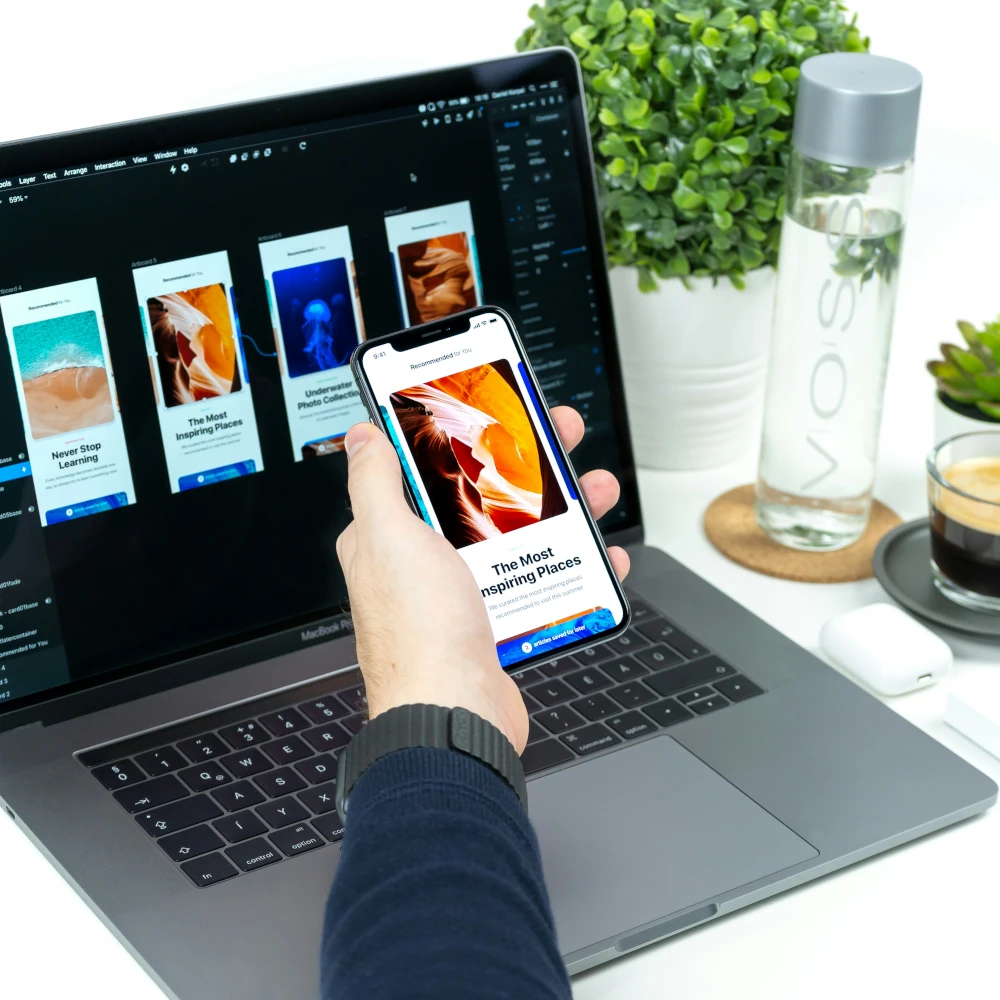As per research, you’ve already formed an opinion about the website before you click a button, scroll down a page, or maximize a window. The average internet user will most likely leave if a website’s visuals or functionality feels cluttered.
ALL websites communicate a great deal to users – purposefully or otherwise. Whether it is in terms of security, which is how a website may potentially pose a malware threat or even just how reliable an online seller’s business is. These mental processes are determined in just the first few minutes of accessing a page. This shows the power of user experience (UX) design in dictating our online opinions.
But what is user experience design? How does user interface design differ from user experience design? For tech entrepreneurs, what is the value of user experience design?
In this section, we will look at the various reasons why UX design is an important and distinct art form. And about the features that set it apart from user interface (UI) design and other set of owned benefits for a website.

What is User Experience (or UX) Design?
UX design is not just the end result – it’s a process.
It refers to the development of products and services. UX design offers users satisfying, relevant, and meaningful experiences. Thus, improving the experience that users have when interacting with one’s product or service aptly defines user experience design.
History of U
The history of how the user experience has taken its modern form existed long before the contemporary computer was even invented.
How long ago, exactly? The origins of the principles underlying UX design can be traced as far back as works dating over a century ago.
In the early 20th century, Fredrick Winslow Taylor – a mechanical engineer – pioneered the concept of Scientific Management. It focused on improving labor productivity and economic efficiency in management. The idea was to optimize the link between people and their tools using the key UX principles. Which are still applicable today.
In the 1940s, Toyota created a human-centered production system. The system prioritized respect for the people that were contributing to it. Workers could stop production lines when they had suggestions on how to make them better, or on changing the work system. This served as a significant milestone in UX research. This not just realized the role of human-machine interaction, but also shed light on the value of usability as a UX element. Henry Dreyfuss used some of these ideas with his most iconic products, such as the Royal Typewriter Company’s Quiet Deluxe Model.
Walt Disney is popularly known as one of history’s first UX designers. It all began with Disney’s Imagineers, the creative force behind the development of Disney products and services. They were devised to think like their audience, to put themselves in their shoes, and communicate with them in ways that would best resonate with the way they think. These ideas are imperative to UX designing even today.
The era of personal computers started in the 1970s. This included tech giants such as Apple and Xerox striving to make the user experience as pleasant and intriguing as possible. Apple’s release of the Macintosh in 1984 had also been widely regarded as a breakthrough in the evolution of user experience. As it featured a graphical user interface (GUI) and interactive tools such as a monitor and a mouse.
Don Norman, a cognitive scientist at Apple, coined the term “user experience design” in 1995. He went over the entire process of creating and executing a user experience. His work on the formerly known book titled “The Psychology of Everyday Things” is still considered to be a staple in the field today.
UX design may have changed in form drastically over the past few decades, but its purpose has been the same. Which is to provide comfort and simplicity in the user experience. In terms of UX design significance, it would be a crime to dismiss an equally important and often intertwined concept: UI design.
What is the Difference Between UX and UI?
Despite being a popular term in product and web design, UI UX design combines two distinct processes used to achieve similar goals. The distinction between UI and UX, however, is not as clear as one might think due to their interchangeability.
User experience design focuses on the combination of ideas and features that optimize the process of people using a product or service. User interface (or UI) design, on the other hand, focuses on the presentation of the product or service. It emphasizes a distinct appearance and attempts to highlight its interactivity aspects of it.
Many user interface and user experience jobs are also classified as graphic design or frontend development. This, however, does not capture the entire picture of the practice and only complicates the UI vs UX discussion.
User interface design elements involve only visual and interactive tools. These involve the page layout, the buttons on the page, the typeface and font colors, and the responsiveness of the design. The goal of UI design is to be able to guide the user throughout the product or service visually in a way that seems intuitive and simple.
User experience design elements, on the other hand, are more involved with the ‘feel’ of the product or service. These involve information architecture, interaction design, content personalization, and so forth.
Though the distinction between the two may not be obvious at first, understanding it is critical if UX design is to reach its highest form.
What is the Importance of a Good User Experience?
At this point, you might be wondering: why is a good user experience (UX) even important?
More than 75% of consumers say the ‘look’ of a company’s website influences their decisions about the quality of its services. While 38% say that they will refuse to engage with a website if its layout is not attractive.
Users are the focus of any product or service, and UX design strives to meet their needs as quickly as possible.
Websites that prioritize user experience design ensure that visitors are made to feel important. They are easily guided through the website, instilling a sense of visitor loyalty. When done correctly, it can be a simple and low-cost way to ensure that your brand is perfectly positioned in the minds of users.

Benefits of a Good User Experience
So, what are the advantages of devoting the time and effort required to perfect your website’s UX design?
Many advantages are exclusively given to those players that perfect the user experience in their product or service.
Loyal Customer Base
As stated before, consumer retention is higher in situations where users believe their presence is valued. Customers are more likely to remain loyal to brands that can identify flaws that frustrate users and empathize with their needs. Allowing users to engage with content in novel ways, and plan out user journey maps are also more likely to stay committed to the brand.
A survey showed 79% of people stating that they would be more likely to revisit a website if it were easier to use. This emphasizes the importance of investing in UX design to improve brand equity.
Minimizes Costs
Effective UX design allows designers to stay within production budgets while also reducing them. Good UX designs enable better estimations during the research, prototyping, usability testing, and final implementation phases. This prevents feature creep, which saves valuable time and resources.
McAfee saved around 90% in their expenses after integrating more usable UX design methods across the board.
Increases Revenues
The revenue benefits of UX design gather up as a result of influencing the ease of use of the service or product. Which are most likely to spur users to make desired interactions with the website. A reduced number of steps and precise CTAs that are simple to follow are also exclusive of the benefits.
Research has shown that every dollar spent on UX design gives a return of around 100 dollars, an ROI of 9,900%.
There is almost never a reason to be deterred from improving the user experience of one’s website. It’s simple, quick, and, most importantly, extremely effective. Companies that perfect their UX design are always one step ahead of the competition. That is because they are constantly thinking about what their customers want.
Impact of a Good UX on Your Business
Clearly, UX design can radically impact -for better or worse – the outlook your organization conveys. When done wisely, it serves as a great equalizer. As it allows the smallest of organizations to compete with corporate giants globally. UX looks out for the adversary and helps humanize your business in ways that nothing else can.
The value that an effective UX brings is self-evident. As previously stated, UX can help you build a loyal customer base that will help you reduce costs and maximize revenue.
The possibilities for UX modification are limitless, as are the ways in which users can interact with your content. From methods such as voice interaction that do not require the use of a keyboard or mouse and virtual reality experiences that immerse users completely in the content that they desire, to design without interfaces – UX design is growing and evolving on an almost daily basis.
Given that the quantitative benefits of UX design are hard to specify, its positive impact is undeniable. Quite simply, superlative website UX design is expected.


